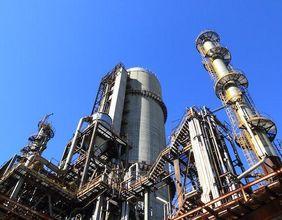S&P 500, which closed at 3324.54 on 24 January 2020, reported a sudden downfall, reaching 3243.63 on 27 January 2020, representing a fall of 2.43%. The sector was strongly impacted on Monday, 27 January 2020 because of the exposure concerns related to the coronavirus occurrence in China. Around 106 people have died in China due to coronavirus. The head of the World Health Organisation expressed his confidence in the nation’s ability to tackle the situation which has not only affected so many people but also led businesses to end operations and restrict travel to the Hubei province.
The US health and human services secretary talked about the steps to counter the coronavirus, which includes restricting travel to China.
However, on 28 January 2020, S&P 500 bounced back after Apple Inc. announced the financial results for its fiscal 2020 first quarter ended 28 December 2019.
The quarterly revenue of the company increased by 9% to US$91.8 bn as compared to the previous corresponding period. The quarterly earnings per diluted share went up by 19% to US$4.99. International sales represented 61% of the quarterly revenue.
Apple also confirmed that the December 2019 quarter was its highest quarterly revenue ever driven by a strong demand for iPhone 11 and iPhone 11 Pro models along with record revenues for Services and Wearables.
During the holiday quarter, Apple’s active installed base of devices increased in each of its geographic divisions and has now exceeded more than 1.5 bn and all-time records services and wearables.
The strong business performance resulted in an all-time net income record of US$22.2 bn. The company’s operating cash flow was US$30.5 bn. Around US$25 bn was given back to the shareholders during the quarter, which comprises of US$20 bn in share buyback as well as $3.5 bn in dividend & equivalents.
The board of directors of Apple announced a dividend of US$0.77 per common share which would be payable on 13 February 2020.
For Q2 FY2020, Apple has provided the below:
- Revenue would range in between US$63 bn and US$67 bn.
- Gross margin would lie in the range of 38% and 39%.
- Operating expenses would be from US$9.6 bn to US$9.7 bn.
- Other income/(expense) is expected to be US$250 mn.
- Tax rate would be ~16.5%.
For December 2019 quarter, the reported sales & profits for the holiday shopping quarter were above the anticipated numbers of the Wall Street because of the increase in the iPhone sales for the first time in the year. The increase in iPhone sales also led to an increase in demand for add-ons like AirPods wireless headphones. But at the same time, the CEO of Apple, Tim Cook told Reuters that Apple was using a wider-than-normal projection scale as a result of uncertainty generated by the coronavirus eruption in China, where most of the suppliers of Apple are based.
Mr Cook also talked about executive plans to discuss in detail about the impact of the Coronavirus on the supply chain of the business.
A year back, Mr Cook expected that Apple might fail to achieve the financial targets or its biggest sales quarter of FY2019. The company also slashed prices in China in order to revive the sales in the region. Further, it made a push into paid services, rolled out a credit card with Goldman Sachs along with television facilities as well as subscription gaming in 2019.
Apple’s services revenue for the quarter was $12.7 bn, lower than analyst estimates of $13 bn and up from $10.9 bn as compared to the previous corresponding period. The shift towards services is directly proportional to Apple’s growth in its user base and sign them for recurring subscriptions. At present, Apple has above 1.5 bn active installed devices along with 480 mn subscribers to its own and third party paid services which were 1.4 bn devices & 360 mn subscribers during the previous year in the same quarter.
The company expects to exceed its earlier indicated goal of 500 mn subscribers for 2020 during the March 2020 quarter.
Apple’s Contribution to the S&P 500:
Apple is amongst the top five technology companies in the world. Apple, along with other companies like Microsoft, Alphabet, Amazon and Facebook, accounts for more than 17% of the S&P 500, which could be considered as a matter of risk to passive investors.
Apple’s Production in China:
If you see the back of the iPhone, iPad or any other Apple product, one will find that the product is assembled in China. Apple has outsourced all its production to overseas countries, particularly China. The reason for outsourcing production to China is because there are not enough human resources in America who could support the large-scale manufacturing of Apple’s products.
Other than human resources, the raw materials used in the production of Apple’s products are also manufactured overseas. Most of these raw material productions take place near the final assembly plant.
Also, the labour cost in China is significantly less than the US. Thus, the company ends up paying a lot less for the manufacturing processes as compared to what it would have had to pay in the US.
Coronavirus impact on Apple’s Supply Chain:
Because of the outbreak of coronavirus in China, there are possibilities that it could disrupt Apple’s supply chain. Majority of the company’s supply chain is situated in China, and its biggest plant is in the Hunan province.
Due to the outbreak of coronavirus in China, and China being the centre of Apple’s supply chain, investors would now keep an eye on the company’s earnings despite the company’s strong December quarterly results.
On 29 January 2019, the shares of Apple closed at US$324.34, up 2.09% from its previous close. The share exceeded its 52 weeks high price. Market cap as on 29 January 2020 was approximately US$1.4 trillion.
Disclaimer
This website is a service of Kalkine Media Pty. Ltd. A.C.N. 629 651 672. The website has been prepared for informational purposes only and is not intended to be used as a complete source of information on any particular company. Kalkine Media does not in any way endorse or recommend individuals, products or services that may be discussed on this site. Our publications are NOT a solicitation or recommendation to buy, sell or hold. We are neither licensed nor qualified to provide investment advice.









